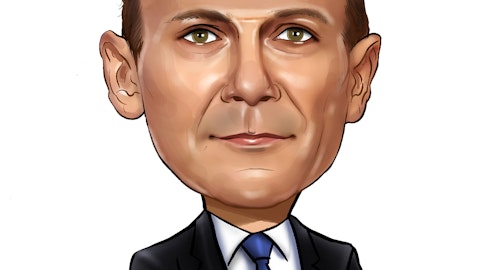We purchased several American and European defense companies. We like these businesses for several reasons: Their business will not be significantly impacted by or changed by the coronavirus. The government will maintain military production, and maintenance of submarines, aircraft, and tanks will continue with or without social distancing.
Also, the world is not becoming safer. Nationalistic tensions were on the rise before the virus; but despite the stump speeches by politicians about job losses due to globalization, companies had little incentive to bring manufacturing back to the US. This has changed. The virus exposed the weaknesses of the global trade and just-in-time inventory systems, which were efficient (required less capital and resulted in lower costs) but not resilient (could not handle shocks and interruptions and conflicting geopolitical interests).
The US’s inability to manufacture something as simple as an N95 mask was a wakeup call that we need to bring our strategic manufacturing back on-shore. On-shoring will start with strategic items. However, the definition of “strategic” will expand. In the past the defense industry was strategic. The new definition won’t apply to just that industry (and to masks and active pharmaceutical ingredients) but to other advanced technologies as well. Taiwan Semiconductor (TSM), one of the largest semiconductor manufacturers, has announced what would have been unthinkable even six months ago: It will build a $12 billion factory in Arizona that will manufacture microprocessors. Tech manufacturing is usually done in clusters, and this means the semiconductor supply chain may partially migrate to the US.

Portogas D Ace/Shutterstock.com
We don’t want to be party spoilers here, because this is good news for the US, as it will bring jobs back here. But factories like this one will bring fewer jobs than the tens of billions of dollars of investment in them would seem to imply. To be competitive with Asian counterparts, which have a lower cost of living and thus lower labor costs, these factories will need to be incredibly automated, and thus capital (machines and robots) will be doing most of the work, not humans.
Also, this means China will be pouring billions of dollars into subsidizing their own tech sector – it doesn’t want to be reliant on the US any more than we want to rely on them. This is not good news for our tech companies – the likes of Qualcomm (QCOM) and Micron (MU) – as the Chinese market will be shut off for them in the future (this is why we reduced our Micron position).
The positive side effect of global trade that we rarely think about is that it has created deep interdependencies among trading countries and thus made the world safer. It forced us to trust each other more. Reversing globalization, in tandem with the US’s stepping away from the role of global leader (not a political statement, just a fact), makes the world less safe. Thus, despite governments’ budgets being strained by COVID-19, we think defense spending will continue to go higher (financed by governments printing money), not just in the US but in Europe as well.
And one more thing…
I am not a journalist or reporter; I am an investor who thinks through writing. This and other investment articles are just my thinking at the point they were written. However, investment research is not static, it is fluid. New information comes our way and we continue to do research, which may lead us to tweak and modify assumptions and thus to change our minds.
We are long-term investors and often hold stocks for years, but as luck may or may not have it, by the time you read this article we may have already sold the stock. I may or may not write about this company ever again. Think of this and other articles as learning and thinking frameworks. But they are not investment recommendations. The bottom line is this. If this article piques your interest in the company I’ve mentioned, great. This should be the beginning, not the end, of your research.
Read this before you buy your next stock
Video: Top 5 Stocks Among Hedge Funds
At Insider Monkey we scour multiple sources to uncover the next great investment idea. For example, legal marijuana is one of the fastest growing industries right now, so we are checking out stock pitches like “the Starbucks of cannabis” to identify the next tenbagger. Federal Reserve has been creating trillions of dollars electronically to keep the interest rates near zero. We believe this will lead to inflation and boost precious metals prices. So, we are checking out this junior gold mining stock. We read hedge fund investor letters and listen to stock pitches at hedge fund conferences. We go through lists like the 10 most profitable companies in the world to pick the best large-cap stocks to buy. Even though we recommend positions in only a tiny fraction of the companies we analyze, we check out as many stocks as we can. You can subscribe to our free enewsletter below to receive our stories in your inbox:
Disclosure: None





